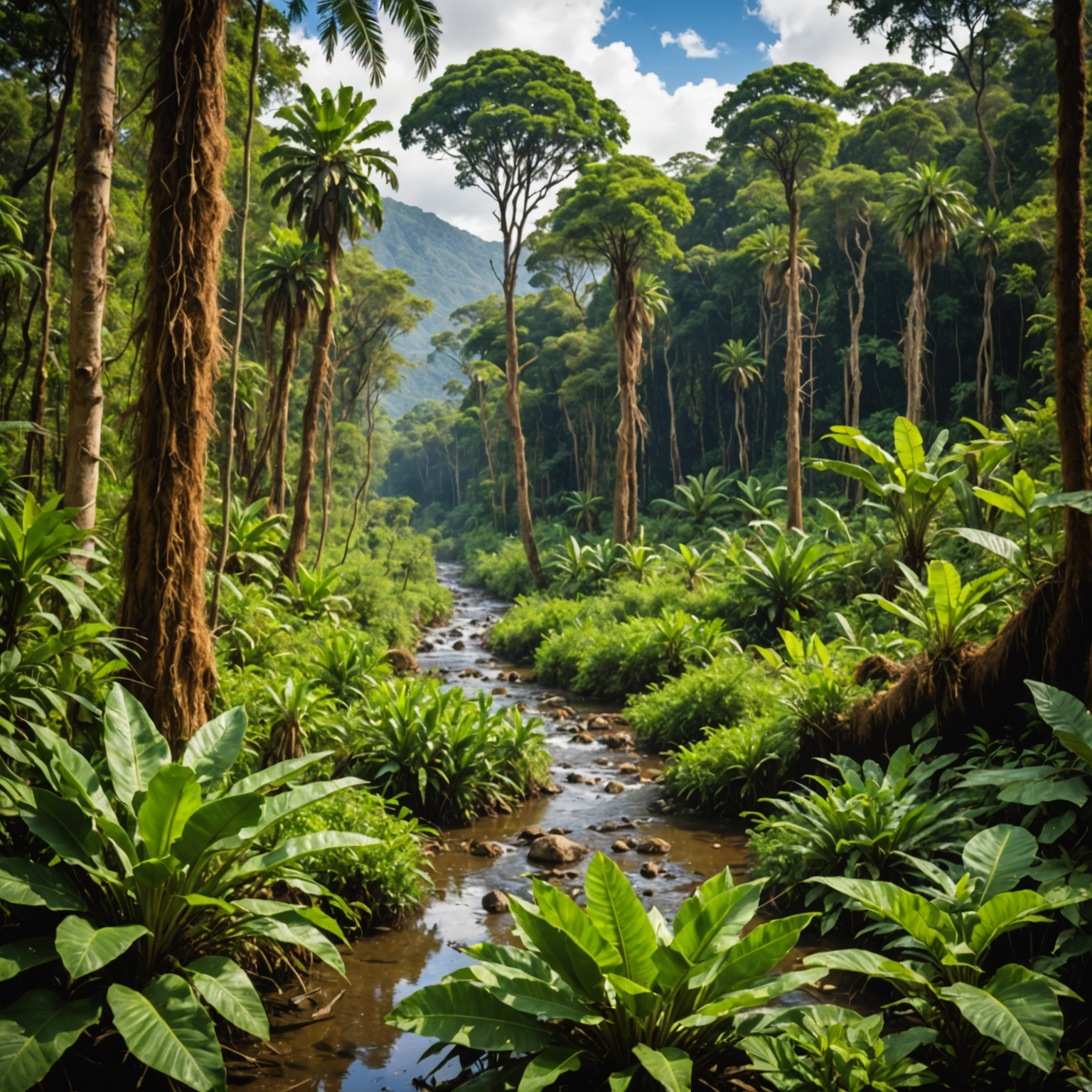Why is there a desert next to the Amazon rainforest?
 The Amazon rainforest and the Atacama Desert: neighbors with very different climates and ecosystems.
The Amazon rainforest and the Atacama Desert: neighbors with very different climates and ecosystems.
Discovering the surprising neighbors of South America’s wildest landscapes
By Peter Teoh, Science Writer
The Amazon rainforest is famous worldwide as a lush, humid jungle bursting with life. But just a few thousand kilometers away, you’ll find one of the driest places on Earth: the Atacama Desert. How can a vast wet forest and a blazing dry desert exist so close to each other? It turns out that the reasons lie deep in the geography, climate, and mountains of South America.
The Amazon and the Atacama: A Tale of Two Extremes
The Amazon rainforest stretches over 5.5 million square kilometers across northern South America, covering parts of Brazil, Peru, Colombia, and several other countries. It’s a humid tropical forest with some of the highest rainfall on the planet—up to 2,300 millimeters (90 inches) per year in many places[5][3]. This constant wetness fuels incredible biodiversity and dense vegetation.
By contrast, the Atacama Desert sits on the western edge of South America, mainly in northern Chile. It’s one of the driest places on Earth, with some areas receiving less than 1 millimeter of rain annually[1][4]. The desert’s landscape is a vast, rocky plateau punctuated by salt flats and barren valleys. It might look like a scene from Mars, and scientists have even used it to test Mars rovers because of its extreme dryness and soil composition[1].
How Can These Two Places Be So Close?
The secret lies mainly in the Andes Mountains — a massive mountain range running along South America’s western side. The Andes are the longest mountain chain in the world, stretching over 7,000 kilometers (4,300 miles) from Venezuela all the way to southern Chile. These mountains create a powerful climate divide between the Amazon basin on the east and the deserts on the west[3].
The Rain Shadow Effect
When moist air travels from the Atlantic Ocean toward the west, it hits the Amazon rainforest first. The forest’s dense trees and warm temperatures encourage heavy rainfall. But as this air rises over the Andes, it cools down and loses much of its moisture in the form of rain or snow on the eastern slopes.
By the time the air passes over the mountains and descends on the western side, it is dry and warm. This dry air creates a rain shadow, which means the areas on the western side of the Andes receive very little precipitation. The Atacama Desert lies in this rain shadow, which is why it is so dry despite being close to the wet Amazon[1][3].
Cold Ocean Currents and Atmospheric Patterns
Another factor making the Atacama so dry is the Humboldt Current, a cold ocean current flowing northward along the western coast of South America. This cold water cools the air above it, reducing its ability to hold moisture, so there is less chance of rain forming over the desert region[1].
Additionally, a strong high-pressure system called the Pacific anticyclone stabilizes the atmosphere, making it hard for clouds to form and rain to fall in the Atacama[1].
Elevation and Geography
The Andes are incredibly high, with peaks reaching over 6,000 meters (almost 20,000 feet). This height not only forces moisture to drop on the eastern side but also blocks moisture coming from the Pacific Ocean. The desert sits between two mountain ranges — the Andes and the Chilean Coast Range — which together create a double barrier preventing wet air from reaching the Atacama[1].
What Does This Mean for Life and People?
The Amazon’s abundant rainfall supports millions of plants, animals, and indigenous communities that rely on its resources. Meanwhile, the Atacama’s dryness means life is sparse, but some specially adapted plants and animals survive there. The desert’s mineral-rich soils have also made it a center for mining valuable resources like copper.
This contrast is a powerful reminder of how geography and climate shape our world — neighboring areas can be wildly different ecosystems because of mountains, ocean currents, and atmospheric conditions.
Side Notes
- Rain Shadow: A dry area on the leeward side of a mountain range where moisture is blocked by the mountains.
- Humboldt Current: A cold ocean current that flows along the west coast of South America, affecting climate.
- Pacific Anticyclone: A high-pressure weather system over the Pacific Ocean that suppresses rain.
Trending Sidebar
- Amazon Rainforest’s Role in Climate Change: The forest absorbs huge amounts of carbon dioxide, helping fight global warming[3].
- Atacama Desert Mars Missions: Scientists use Atacama’s dry conditions to prepare for Mars explorations[1].
- Andes Mountains as a Biodiversity Hotspot: The Andes are home to many unique species due to their varied climates and altitudes.
Exploring why a desert can neighbor one of the wettest places on Earth teaches us about the incredible power of natural forces like mountains and oceans. Next time you see a map of South America, remember the Amazon and Atacama — two worlds side by side, shaped by Earth’s geography and climate.
References
- Atacama Desert - Wikipedia
-
[Atacama Plateau Britannica](https://www.britannica.com/place/Atacama-Plateau) - Physical Geography of South America - SLCC
- Atacama Desert Facts & Information
- Physical Geography and Features of South America
Leave a comment